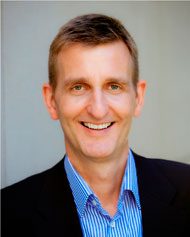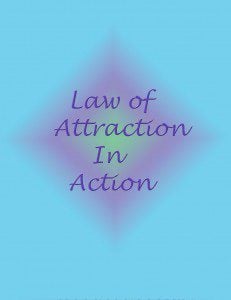 I’m delighted top have Friedemann Schaub MD., Ph.D., the founder of Cellular Wisdom, back as my guest today. He works with people to help them improve their health using both inner tools and his medical background. Today he shares his knowledge about how we create create fear and anxiety. Here’s what he has to say.
I’m delighted top have Friedemann Schaub MD., Ph.D., the founder of Cellular Wisdom, back as my guest today. He works with people to help them improve their health using both inner tools and his medical background. Today he shares his knowledge about how we create create fear and anxiety. Here’s what he has to say.
How Do We Create Fear and Anxiety?
by Friedemann Schaub
According to the National Institute of Mental Health approximately 50 million American adults ages 18 and older, or about 20 percent of people in this age group in a given year, are diagnosed with anxiety disorder. Anxiety is called the epidemic of the 21st century. Fear and anxiety are basic feelings, which are perceived as unpleasant sensations that arise inside of us, when we believe that we are in some ways in danger. The heart beats faster, the breath shortens, the muscles tighten, the hairs can stand up, the hands sweat and the whole body can start shaking. It can range from an apprehension to a full-blown panic attack.
Fear and anxiety can appear very sudden and overwhelming, as if these emotions are done to us or, which makes us feel powerless and out of control. You may have a perfectly peaceful moment and all of the sudden you notice that you left your wallet in the cab. The anxiety hits, when you start thinking about all the bad consequences this may have for you. Or one week before your big presentation at work, the unsettling current of anxiety in you seems to noticeably increase. Or you wake up in the morning and the fear and anxiety may immediately show up, ready to take control of the day.
However, although fear can appear as an uncontrollable energy that exists within us, it is simply a feeling that we created. Understanding some important facts on fear and anxiety is the first step to demystify this emotion and regain control – the more we know about something, the more we can find ways to deal with it.
Fear is a basic feeling and therefore created by us – it is not something we have, but something we do. The purpose of fear is to keep us safe. There are only 2 fears we are borne with, the fear of falling and the fear of starvation / abandonment. All other fears are learned through our own or other’s experiences. A feeling is a form of communication from the subconscious part of our mind, which is eventually registered by the conscious mind. As all feelings, fear and anxiety are information for us to pay attention to. The more uncomfortable the sensation, the more closely and immediately our subconscious mind wants us to pay attention to. Another example of this is the feeling of pain.
The elaborate system of our brain and nervous system is designed to register fear and anxiety and consequently make us respond to it. The resourceful and adaptive side of fear is that we are able to notice and anticipate danger and then take precautions or appropriately address the situation. Our relatives from the stone age, faced on a daily basis life-threatening situations, such as encountering tigers, bears and other predators, where fear was a helpful to stay safe despite being physically inferior. Therefore it makes complete sense that our ability to create fear in order to ensure the survival of our species was preserved during evolution. Research even suggests that the fear of snakes and spiders is rooted in early evolution.
In the world of the 21st century, do we need more or less fear and anxiety to survive as a species? A low-grade, short lasting fear can keep us on our toes and prevent us from putting ourselves into situations, which potentially could hurt us. More intense fear can help us to be fully alert and physiologically mobilize additional energy and resources that can be utilized to “fight” or “run away” from the danger. However, do we really need fear on a daily basis to stay safe? Let’s say you burn yourself on a hot stove, do you need to hold on to the pain to realize that you should not touch a hot stove again? Do we need the fear of loosing our jobs, to makes us go to work and perform every day? Is it the fear of getting hit by a car that stops us from walking across a busy highway? Or is it experience and common sense that most commonly keep us safe?
Fear can also immobilize us, which then leads to the “deer in the headlight effect”, when we just feel paralyzed, not able to make a decision or even physically move. While it may be an effective way to alert us, when it escalates and grows into a panic, it can have devastating consequences.
Fear and anxiety is the internal interpretation of external and internal stimuli. Fear gets triggered by something we see, hear, smell, taste, feel or say to ourselves. You walk at night in a dark alley, wondering, whether the stranger who walks quietly behind you, wants to mug you? These thoughts, interpretations of reality, cause you to feel anxious – take action. You walk faster, trying to get away from the dark alley. A short time later you realize that the person behind you was a young woman, who was probably as scared as you were. In hindsight, the anxiety was completely unfounded and based on your imagination. So was it worth it? You certainly can argue that in this case fear and anxiety were appropriate, prompting us to take action to deal with a potentially dangerous situation.
But how do you decide if a situation is truly dangerous? Are we responding to fantasy and “what ifs” or do we avoid real threats? And how can well tell the difference – and stay safe?
Mark Twain said:” I have experienced many tragedies in my life. Most of which never happened.” How often, did we create an anxiety evoking scenario by filtering information from the outside – and creating a “reality” based story on the complete lack of information. It is estimated that we are receiving 2 million bits of information per second, which is vastly more than our mind can deal with. In fact consciously we are only able to compute 7 bits of information per second. So in order to make sense of the world, a large amount of information needs to be filtered out. This is the job of our subconscious mind, which uses filters that distort, generalize and delete information. These subconscious filters consist of memories of past experiences, unresolved emotions, memories, values and beliefs. Since we are often not consciously aware of the filters, we are also not aware that our “reality” is an extremely condensed version of all the information that is surrounding us.
Depending on your filters, you are more or less likely to interpret “reality” as something dangerous or safe. For example, the more anxiety and stress we have stored on the level of the subconscious mind, the easier these emotions will get triggered. Or if one of our core beliefs is that “we we are not safe”, we will subconsciously look for evidence that confirms this belief. Therefore, in order to overcome fear and anxiety we need to work with the subconscious mind to change the filters, that make us more prone to experience these emotions.
*****************
For more information on how Dr. Schaub’s Personal Breakthrough and Empowerment Program can help you to overcome fear and anxiety visit www.cellularwisdom.com.
*********************
Take the 31 Days of Self-Love Challenge –a pledge to start your year by doing something kind for yourself for the first 31 days of January–and get my book, How Do I Love Me? Let Me Count the Ways for free at http://howdoiloveme.com. And you can post your loving acts HERE to reinforce your intention to love yourself. Read my 31 Days of Self-Love Posts HERE.
Please leave comments under my posts so we can stay connected.

